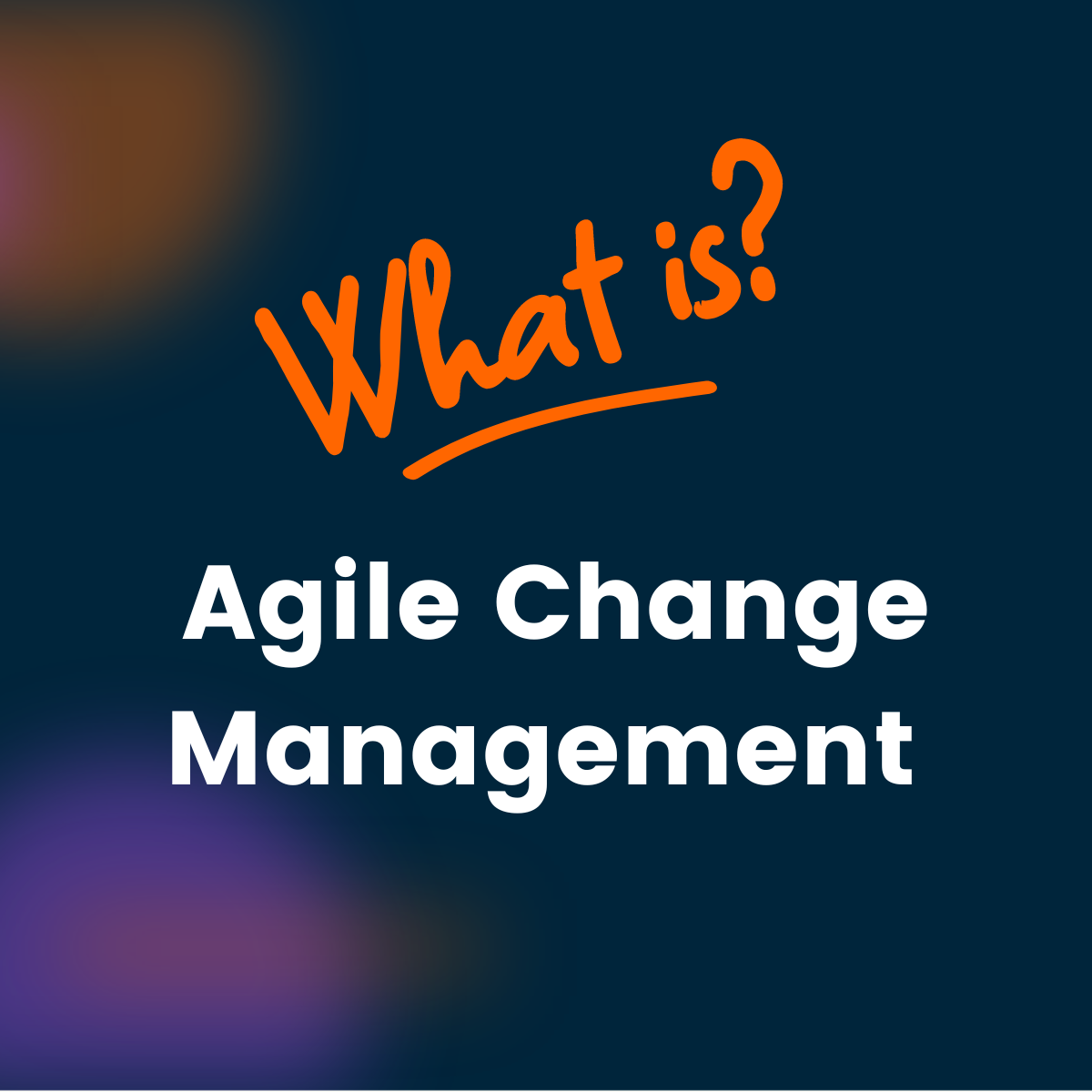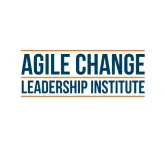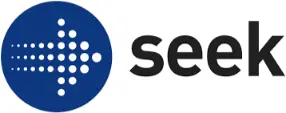In the ever-evolving landscape of business transformation, agile change management is challenging the established norms of traditional methodologies.
Its emphasis on flexibility and responsiveness often clashes with the structured, linear approach that has dominated traditional change management for decades.
Our team at the Agile Change Leadership Institute has first-hand experience ‘in the trenches’ and understands the exact challenges teams face with outdated, traditional change management practices.
We’ve helped 132 organisations and 1,550+ students in 69 countries transition towards agile change management, ensuring continuous improvement and stakeholder satisfaction.
Continue reading our guide to get a better understanding of how agile thinking can benefit your workplace.
What is agile change management?
Agile change management is a relatively new practice that is fast taking over the business world.
Agile change management is a body of work that seeks to support people through the delivery of change at speed with lean resourcing.
It applies to both business agility transformations and the context of agile delivery of technology and product releases or projects.
The foundations of the agile change management body of work are an agile mindset, agile change practices and tools, and agile change ways of working.
It encourages an adaptive approach to how we support people through change and lets go of heavy tools, processes and restrictive controls.
The key role is the Agile Change Manager.
These are people with a change management background who have upskilled to be nimbler and more adaptive in their practice.
There is typically not an agile change process or methodology to be used.
Rather change managers favour a focus on the capabilities that help them deliver change at speed.
The agile change capabilities that boost the success of the agile change manager are data-informed decision making, transparent and visual communication, and continuous engagement.
While we said ‘key role’, it is important to note that agile change management is a capability that everyone can build, and should build.
Increasingly we are seeing an uptick in situations where ‘Change is Everybody’s Business‘, and people are expected to use self-serve agile change frameworks and tools.
This is a great development from our perspective!
One of the things that most ‘traditional’ change managers find most challenging with agile change management is “letting go”.
Success depends heavily on a test and learn / experimentation focus with feedback being your friend.
The agile change manager facilitates change through an adaptive approach rather than seeks to control the success of the project through a rigid application of five-step processes.
Increases engagement
Agile change is dependent on the co-creation of change and this is inherently engaging.
Simply put, we do change with people, not to people.
The use of transparent and visual communication engages people in conversations about the changes going on.
Can deliver change in short periods of time
Continuous learning and fast feedback cycles are core to agile change management.
The shorter your feedback cycles, the more confidence you have in what you can do and what impact it will have.
Improves implementation success and productivity
The test and learn cycles of agile change allow you to increase the likelihood of success, and minimise the risks to successful implementation.
You find that the productivity dip gets smaller – time to proficiency increases.
It’s brain-friendly
Agile change works from the principles of Agile, one of these principles is the importance of simplicity.
Maximising the amount of work not done plus visual and transparent communication means that messages and concepts are easy to understand for the most overwhelmed.
Reduces change resistance and change fatigue
The more you engage, the less you see change resistance.
Decreasing the time to deliver change allows audiences to see benefits faster, and reduce change fatigue.
It normalises the frequency and volume of change.
How agile and change management work together
Historically, Agile and change management haven’t always worked well together.
This may be because change managers have been slow to update their practices.
Agilists can see change managers as anchors to the swift deployment of change.
We’ve been told – the problem with change managers is:
- They want us all to fill out spreadsheets,
- They spend all their time protecting people from change
- They just want to control everything.
While there may be some truth in this, agilists are not immune from needing to take their own medicine either.
The bottom line is that while people are involved in receiving change created by agile teams (either customers, operations teams, or sales teams), change managers do need to work with agilists.
That means starting with understanding what agile is about and adapting your practice.
Agile and change management can be complementary.
Change management ensures that the solution developed is adopted easily and increases the feedback cycles for future iterations.
Is there an agile change management plan template?
This is a common question when change managers first start working agile.
The answer can be the biggest shock and the biggest joy in working with agile change.
No.
Here’s why – whereas once we did change management plans in a uniform template, that took 40 pages, and 12 weeks to be signed off by 15 members of the steering committee, it’s very different now.
Agile change is all about the quality of conversations and so you might use a change canvas or a change roadmap with high-level details to progress conversations.
There are actually many change practices that have shifted as a result of the move to agile.
Here are four of them to consider:
Then and now: 4 agile change practices and tools
| THEN: Change Management Plans | NOW: Change Management Roadmaps / Canvases |
|---|---|
| Long, wordy Microsoft Word documents that nobody looks at after they are signed off. | A plan on a page with a visually appealing design that facilitates conversations. Stakeholders can see how they fit into the roadmap. |
| THEN: Detailed Change Impact Analysis on spreadsheets | NOW: Think, Act, Feel workshops |
| Disengaging, cumbersome, difficult to update and not always used. A tick-the-box exercise. | Highly engaging, draws out the impacts and creates interventions at a cognitive (think), behavioural (act) and empathy (feel) level. |
| THEN: Change champions | NOW: Social Architecture / 3% rule |
| The poison chalice of change – appointing the most popular or well-liked person in each team as a change champion. They’re already overworked and resent the “extra” activity. | Designing change around the natural internal communities to create viral transmission. Using organisational network analysis to find natural alignment with the change. |
| THEN: Stakeholder Identification Spreadsheets | NOW: Blast radius and persona mapping |
| Painfully detailed, hard to keep up to date, a focus on perfect information | Highly visual, high-level information. Easy to use for conversations about who to engage and keep the change focused on the right people and what matters. |
Is there an agile change management process?
While there is not an agile change methodology per se, there is the concept of the MVCP – the Minimum Viable Change Process.
This is where you apply the Minimum Viable Product concept from Agile to change.
You ask yourself, what is the minimum work we could do, with the most impact in the time frame we have available?
Your MVCP is highly contextual.
It is dependent on the type of change, the type of organisation and your change sponsor’s objectives.
So it’s likely you will have a different MVCP for any change you work on.
Agile change management examples
Here are some examples of how we have done agile change management.
A Workday implementation with only three people in the change team having to deliver to 26 countries globally we:
- Used visual management success metrics to keep conversations going about change
- Co-created the change backlog using a Work Out Loud approach with a reverse go-live
- Adapted our change communications in real time using Click-To-Open-Rate (CTOR) data from our email platform
In a technology company that makes phone-based apps, we empowered the operations team and contact centre with change-ready checklists generated by their team leaders.
- e.g. “What do we need to feel ready for these releases”. This gave the delivery teams clear direction on what was required for the operations teams to feel equipped to receive the changes. It also gave the operations team confidence and control over the volume of change coming through.
In a bank when supporting automation releases we created a change playbook that could have new pages added with each iterative release.
This reduced the time for training and created a sustainable change resource.
Change management: agile vs waterfall
Most of us have started off working in waterfall approaches to change – where we support linear staged processes.
The move to Agile Change means recognising the difference between agile and waterfall change.
| Agile | Waterfall |
|---|---|
|
|
Our five favourite agile change management tools
The best thing about using agile change management tools is that you don’t need to be working on an agile project to use them. The five agile change tools we love the most regardless of the type of change are:
| Working Out Loud: | This is an approach that requires you to work transparently, showing your work to your stakeholders and allowing them to improve it or contribute to it. |
| Pecha Kucha: | This is a fantastic practice that helps you communicate your ideas quickly and visually so it is quite compelling. It originally started in the design community in Japan, where designers would show 20 slides with 20 seconds each – but we adapt it so we communicate change visions with five slides in five minutes. |
| Change Canvas: | There is nothing as useful as a change canvas. This is a one-page artefact that you can create on collaborative boards like Miro, Mural or MS Powerpoint. It covers the core elements of the change at a glance and you use it to take key stakeholders through what is known and what is not known about the change. |
| Retrospective: | Measure as you go is the mantra of successful agile change. You do this by running regular retrospectives on the change process. When you work out what’s working, what’s not, and what needs to change. Do this weekly and you reduce the risk of failed go-lives! |
| Lean Coffee: | a wonderful practice that makes it easy to run agenda-less meetings and give voice to the people affected by the change. You quickly work out what is top of mind, and what information needs to be shared. |
Where can I learn how to incorporate agile change management?
Whether you’re a change manager looking to become more agile or simply looking to learn more about the topic, we have a range of online courses and books that can help educate you about all things agile.
If you’re looking for certification, we have a range of agile online courses and certificates. To improve your understanding of agile change management however, we recommend these 3:
- Agile Change Management Certificate for those delivering change.
- Agile Change Leadership Certificate for those leading people through change.
- Where Design Thinking Meets Change Management for those seeking to do better design of change.
If you prefer to learn through books, we also have two great publications that will improve your understanding of agile and help you implement its teaching during change:
If you want to speak with a member from our team about which course or book is best for you, feel free to reach out on 1300 959 496 or via our online contact form.
Our friendly team will be able to assist you with any questions you may have!


































